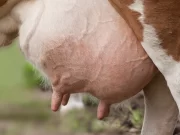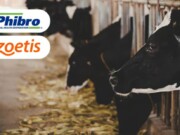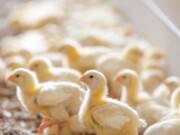
Poultry production has grown dramatically over the last four decades in its quest to reach a sustainable level of production, but the sector still faces numerous challenges, including diseases, high feed costs, and the indiscriminate use of antibiotics. The indiscriminate use of antimicrobials leads to drug resistance that threatens the health of both animals and humans. Antimicrobial resistance in food animals has a significant impact on animal health and may be associated with resistant infections in humans. Because of these challenges, the developed world was compelled to ban the use of antibiotics as growth promoters and the developing world is following in pursuit. The usage of antibiotics for treatment purposes is indispensable and the major challenge before the world is researching for alternatives to the usage of antibiotics. Phytogenics has emerged as an efficient and effective alternative to antibiotics. The plants and plant derivatives have been used to promote a healthy gut and prevent dysbiosis.
Gut health is the most important factor for sustainable production that combines diet, microbiology, immunology, and physiology. When gut health is damaged, digestion and nutrient absorption are disturbed, which has a negative impact on feed conversion, resulting in financial loss and increased disease susceptibility. The gastrointestinal (GI) tract of poultry harbor a diverse and complex microbiota that plays a vital role in digestion and absorption of nutrients, immune system development, and pathogen exclusion. However, the integrity, functionality, and health of the poultry gut depend on many factors including the environment, feed, and the GI microbiota.
Intestinal microbiota is considered crucial that plays an integral role in maintaining the health of poultry by modulating several physiological functions including nutrition, metabolism, and immunity. The digestive process is strongly linked to the gut microbiota, nutrient absorption, feed digestibility, energy harvest, and therefore productivity are influenced by microbiota composition and diversity. The intestinal bacterial population forms a protective barrier that borders the gut, preventing the growth of bacteria that are less friendly or harmful, such as Salmonella, Campylobacter, and Clostridium perfringens. Through competitive exclusion the commensal bacteria dominate attachment sites on gut cells, decreasing pathogen attachment and colonization opportunities. Some bacteria may release substances such as volatile fatty acids, organic acids, and natural antibacterial compounds (bacteriocins) that either impede the growth of less desirable bacteria or render their environment unsuitable for them. Intestinal epithelia form tight junctions that are critical to the physical intestinal barrier’s function, regulating the paracellular passage of ions, solutes, and water across the intestinal epithelium. One of the most important roles of the tight junctions structure is to provide a physical barrier to luminal inflammatory molecules. Impaired integrity and structure of the tight junctions barrier result in a forcible activation of immune cells and chronic inflammation in different tissues.
Violation in gut health results in diarrhea and is one of the most common challenges to poultry. As birds urinate and defecate in one motion, normal chicken droppings should be firm and brown with a white area on top made by urates (the chicken’s urine). Any yellow frothy or bloody droppings are considered abnormal. Various causatives of diarrhea include Coccidia, Worms, Viruses like rotavirus and adenovirus, Bacteria like Salmonella and E.Coli, Kidney problems, or an Imbalanced diet. Diarrhea has a number of negative consequences. Birds become lethargic and lose weight due to less nutrient absorption. The gut is unable to absorb as much water, as it should, producing dehydration, which can lead to death. In severe circumstances, bacteria or toxins will be able to escape the gut and enter the bloodstream, resulting in blood poisoning and death. Diarrhea causes the feathers surrounding the back end to get dirty and matted, as well as moist and polluted bedding. The diarrhea results in loss of economic traits in the form of reduced body weight gain, followed by increased FCR and expenses on chemoprophylaxis. There is a greater challenge from chemoprophylaxis in the form of antibiotic resistance. Diarrhea-causing bacteria with resistance genes can survive and thrive under selective environmental pressure caused by the presence of antimicrobial agents. The risk of antibiotic-resistant strains being transferred from animal species to the environment and people via direct or indirect interaction with animal-derived food is an extremely dangerous consequence of their creation. Many E. coli strains are resistant to β-lactam antibiotics (Ampicillin and Amoxicillin with Clavulanic acid), Aminoglycoside antibiotics (Gentamicin), Fluoroquinolones, and combination preparations comprising Trimethoprim due to the careless use of antibacterial medicines in animals. To avoid this greater risk and to reduce the selosses, phytogenics is an effective and novel way that not only contains the losses but optimizes the production as well.
Phytogenics is the usage of phytochemicals for promoting health and containing diseases. Plants produce a wide range of phytochemicals with a wide range of bioactivities, including phenolics, polyacetylenes, alkaloids, polysaccharides, terpenoids, and essential oils. Essential oils have the potential to promote gut health due to the inclusion of active compounds such as thymol, carvacrol, and eugenol, as well as the fact that they have no known negative effects. Pathogens’ membrane permeability is altered by thymol and eugenol, resulting in intracellular content leakage. Furthermore, when thymol, carvacrol, and eugenol are combined, they have synergistic or additive antibacterial properties, even at low concentrations. They have high activity against pathogenic bacteria such as E. coli, Clostridium perfringens, and Salmonella strains, but have moderate activity against helpful Lactobacillus strains, encouraging eubiosis in poultry guts. Researchers are advocating the usage of herbal compositions to avoid antibiotic resistance and to promote a healthy gut. These compositions have herbs like Aegle marmelos, Punicagranatum,Holarrhenaantidysentrica, Cyperusrotundus, Tinosporacordifoliathat effectively control diarrhea.
It has been deciphered that the essential oils in these herbs cause the bacteria’s cell membrane to disintegrate, allowing ions to migrate outside of the cells.Phenolic chemicals increase the manufacture of interferon by increasing macrophage phagocytic activity and the number of activated B and T cells.The active compounds in Aegle marmelos, such as Marmelosin and Aegelenine, have antibacterial and antifungal properties. Punicalagin and elagic acid found in Punicagranatumhas anti-diarrheal properties. Alkaloids namely, conessine, conkurchine, kurchine, holarrhemine, holarrhenine, kurchicine, and conkurchinine of Holarrhenaantidysentricaare anti-diarrheal in action. They effectively control loose motions, constipation, flatulence, abdominal cramping, diminished appetite, and mucus in stools related like clinical amoebiasis and giardiasis. It has been discovered to help with the issues created by magnesium chloride, such as footpad lesion, high litter and faecal wetness, and poor faecal consistency, which are all symptoms of wet litter. Cyperene, Beta-Scliene, and Cyperone, all derived from the Cyperusrotundus plant, are effective against diarrhea-causing pathogens.Tinosporine, cordifol, heptacosanol, Berberine, and palmatine are phytoconstituents from Tinosporacordifolia with gastroprotective and antidiarrheal properties. It is also used as a chologogue and anti-stress supplement. Garlic and its sulphur components, allicin, alliin, ajoene, diallylsulphide, dithiin, and allylcysteine, have been shown to have broad antibacterial activity, which can help to eradicate the detrimental effects of microbial infections. E. tenella sporulation is effectively inhibited by the compound allicin. It can be well understood that the herbal compositions may provide an effective alternative to use of antibiotics for checking diarrhea, however, the field needs more research, more validation, and more trails to authenticate the claims.
More details can be reached at www.nutricare.in

Dr. Vandana Sharma (M.V.Sc.- Animal Nutrition) Technical Manager
Nutricare Life Sciences
Email Id- vandana.sharma@nutricare.in
Dr.AsraKhurshid (PhD.- L.P.M)
Consultant

























